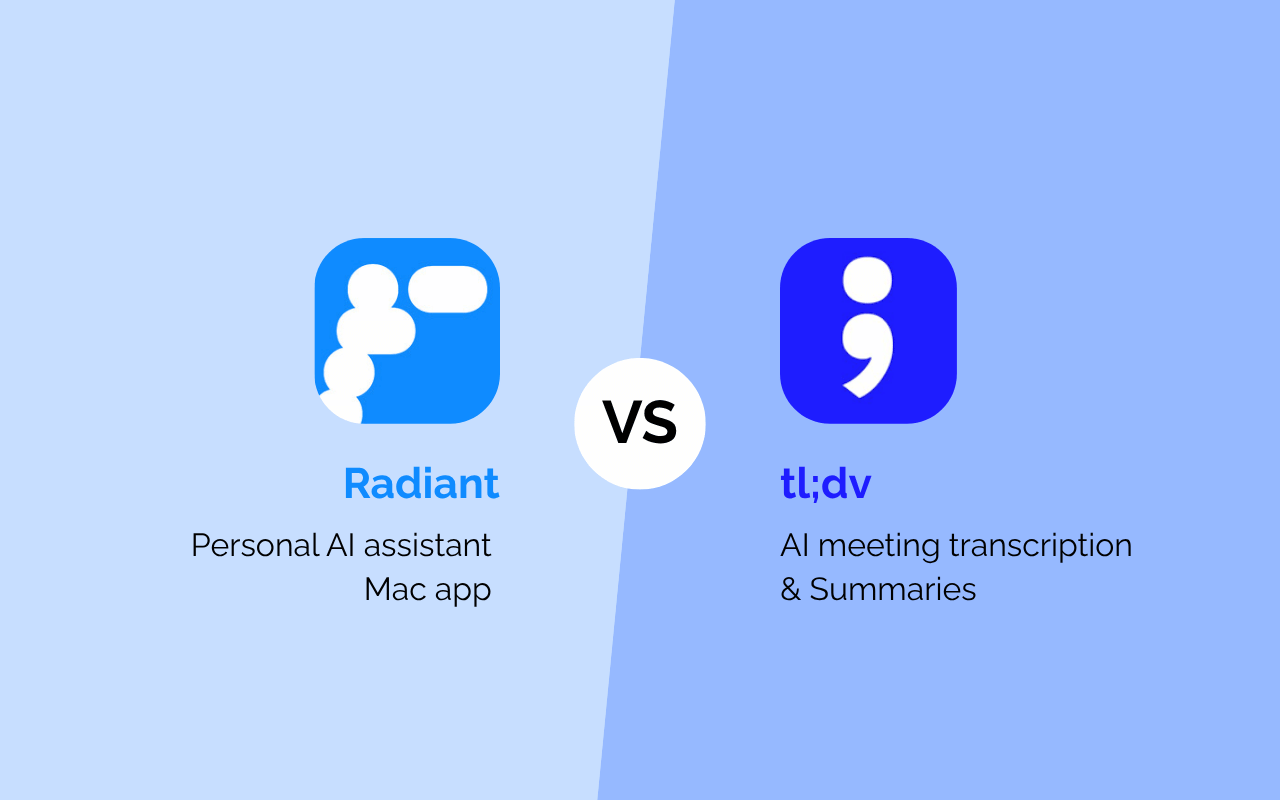Sales teams equipped with well-designed battlecards report confidence levels 40% higher when handling competitive objections compared to those relying on memory alone.
These tactical reference materials serve as critical weapons for sales representatives facing competitive scenarios. Each battlecard provides targeted intelligence about specific competitors, enabling sales professionals to address objections and position their solutions effectively during prospect conversations.
Organizations that treat battlecards as strategic assets rather than simple documents see measurable improvements in win rates. When constructed properly, these tools deliver precise competitive intelligence at the exact moment sales professionals need it most.
Sales representatives no longer hesitate when prospects mention competitor names. Instead, they engage confidently in comparative discussions.
Many organizations struggle with battlecard creation despite recognizing their importance. The most common challenges include:
- Overly complex battlecards that overwhelm sales teams
- Outdated competitive information that undermines credibility
- Poor accessibility when sales representatives need information quickly
- Lack of actionable talking points that directly address customer concerns
- Insufficient maintenance processes to keep content current
The most effective battlecards balance detail with usability. They present critical competitive insights in formats that sales teams can quickly absorb while remaining substantial enough to address specific customer objections.
Market conditions and competitor offerings change rapidly. Successful battlecards evolve continuously to reflect these shifts.
Sales representatives consistently report that quality battlecards boost their confidence during competitive discussions. Rather than avoiding competitor comparisons, representatives armed with solid battlecards can proactively address differences.
They position their solution's strengths against competitor weaknesses with authority.
Effective battlecard programs share several characteristics. They feature consistent templates that streamline information consumption and collaborative creation processes involving multiple departments.
Strategic selection of competitive insights ensures relevance. Accessible storage systems make information available when needed. Regular feedback mechanisms drive continuous improvement.
Organizations seeking competitive advantage find battlecards represent a crucial element in sales enablement strategy. When designed with the end-user in mind and maintained with discipline, these tools change how sales teams handle competitive situations.
The shift moves from defensive reactions to confident, strategic positioning.
The following sections explore specific elements that make battlecards truly effective, best practices for their creation, and strategies for maintaining their relevance over time.
Key Elements of Effective Competitive Battlecards
Superior battlecards distinguish themselves through specific components that directly impact their utility in competitive selling situations. The construction of these tactical resources requires attention to critical elements that collectively determine their effectiveness in real-world sales scenarios.
Relevance and Customization
Generic competitive information rarely serves sales representatives facing specific customer situations. Successful battlecards align precisely with particular sales scenarios and buyer personas, segmenting information by industry verticals, company size, or use cases.
This targeted approach provides contextual insights that resonate with prospects. Customization extends beyond basic segmentation to address competitor strengths and weaknesses relevant to each prospect's stated priorities.
Sales representatives report higher usage rates when battlecards speak directly to their customer's situation rather than offering broad competitive overviews.
Conciseness and Clarity
Active sales cycles leave little time for digesting lengthy competitive documents. Effective battlecards present information concisely, typically limiting content to 1-2 pages per competitor.
Clear formatting with scannable sections enables quick reference during client calls. Visual elements such as comparison tables or feature matrices allow representatives to grasp competitive differences immediately.
Dense text blocks create barriers to quick information retrieval. The most effective battlecards prioritize visual clarity over comprehensive detail.
Actionable Content
Information alone fails to equip sales representatives for competitive conversations. Superior battlecards provide specific talk tracks, objection handlers, and qualifying questions that transform competitive knowledge into conversational tools.
Each competitive claim requires supporting evidence or proof points. This backing gives representatives confidence in their statements while protecting against credibility challenges from well-informed prospects.
Practical content enables immediate deployment during customer interactions rather than requiring additional preparation or memorization.
Accessibility and Integration
Exceptional battlecards deliver no value if sales teams cannot locate them during critical moments. Effective battlecard programs integrate resources directly into CRM systems or sales enablement platforms.
This integration makes competitive intelligence accessible within existing workflows. Representatives can access battlecards whether working from their desk or sitting in a client's conference room.
Multi-device availability ensures competitive information remains available across all selling scenarios.
Interactivity and Engagement
Static documents struggle to maintain attention in digital environments. The most effective battlecards incorporate interactive elements like expandable sections, embedded videos, or clickable navigation.
These features increase engagement while improving retention of competitive information. Battlecards should include mechanisms for capturing field feedback, creating continuous improvement loops that maintain content relevance.
Interactive elements transform passive documents into dynamic selling tools that sales representatives actively use rather than simply reference.
Competitive deals often hinge on these fundamental elements. Organizations seeking to optimize their battlecard strategy must address each component systematically to achieve meaningful improvements in win rates.
Best Practices for Creating Battlecards
Creating effective battlecards requires methodical planning. Successful sales teams follow specific processes that consistently yield competitive intelligence tools their representatives actually use.
Start with a Solid Framework
A standardized battlecard template provides the foundation for consistency across all competitor analyses. This framework should include sections for competitor overview, product comparisons, pricing analysis, and objection handling.
Well-designed templates ensure all critical competitive information is captured without overwhelming sales representatives. Before drafting content, identify 3-5 key categories that align with common sales objections or questions.
This structure makes information retrieval intuitive during client interactions.
Collaborate Cross-Functionally
The most valuable battlecards draw insights from multiple departments. Product teams contribute technical differentiators. Marketing provides messaging frameworks. Sales representatives share field intelligence about competitor tactics.
This cross-functional approach ensures battlecards contain accurate information reflecting diverse perspectives. Establish a regular cadence for gathering inputs from stakeholders across the organization to enhance competitive intelligence quality.
Focus on User Experience
Sales representatives need information they can quickly absorb and apply during customer conversations. Designing battlecards with the end-user in mind dramatically increases adoption rates.
Prioritize visual clarity through consistent formatting, color-coding, and scannable layouts. Consider the specific contexts where representatives will access battlecards—whether before client meetings, during calls, or while handling objections.
Optimize accordingly.
Personalize and Contextualize
Generic competitive information rarely resonates with prospects. Tailor battlecards to address specific market segments, industries, or buyer personas.
Create variations that highlight different value propositions based on customer priorities. This personalization enables sales representatives to position solutions more effectively against competitors for particular audiences.
Pilot and Iterate
Test battlecards with a small group of sales representatives before full deployment to gather feedback. Their practical insights often reveal opportunities for improvement that might otherwise be missed.
Implement a formal feedback mechanism to continuously refine content based on field experiences. This iterative approach ensures battlecards remain relevant and effective over time.
Want to see how leading teams are integrating battlecards into their workflows? Book a demo or reach out to our experts for a personalized consultation!
Generalized Competitive Battlecard Examples
Visual examples demonstrate the difference between effective and ineffective battlecards more clearly than theoretical descriptions. Sales teams learn faster when they see concrete comparisons between poor and well-designed battlecards in action.
Too Detailed Battlecard Example
Complex battlecards overwhelm sales representatives with excessive information. They become virtually unusable during time-sensitive customer interactions. Consider this example:
Competitor X Enterprise Solution Battlecard
- Company Background: Founded in 2005 with headquarters in Boston. 1,200 employees across 8 global offices. Initial public offering in 2015. Current market cap $2.4B. Leadership team includes CEO Jane Smith (former VP at Tech Giant), CTO Robert Johnson (MIT graduate), and COO Michael Williams (previously at Competitor Y).
- Product Details: Platform includes 47 distinct features across 9 product categories. Backend built on proprietary infrastructure with Java and Python components. Database architecture uses both SQL and NoSQL. Average implementation timeframe: 4-6 months depending on integration complexity.
- Pricing Structure: Base package starts at $50,000 annually with premium tier at $85,000. Implementation fees range from $15,000-$35,000. Training packages: Basic ($5,000), Advanced ($12,000), Enterprise ($20,000). Volume discounts apply starting at 100+ users at 5% incremental discount per 50 additional users.
Effective Battlecard Example
Quality battlecards provide focused, actionable information that sales representatives can quickly absorb and apply:
Competitor X Quick Reference
- Key Differentiators:
- Their solution requires 4-6 month implementation vs. our 6-week average
- No mobile capabilities vs. our fully responsive platform
- Annual-only contracts vs. our flexible quarterly options
- Common Objections:
- "Competitor X is cheaper" → Their base price excludes implementation ($15K+) and mandatory training ($5K+)
- "They have more features" → 70% of their features require premium tier; ours are standard
- Qualification Questions:
- "How important is mobile access for your field teams?"
- "What's your timeline for full implementation?"
Key Differences
The effective battlecard differs from the detailed version in several critical ways.
It prioritizes actionable information over comprehensive details. Company history might interest executives, but sales representatives need competitive differentiators they can immediately apply during conversations.
The effective example organizes information according to sales conversation flow rather than information category. This organization supports representatives during actual customer interactions rather than academic study.
Specific objection handlers and qualification questions appear prominently. This design transforms passive information into active sales tools that representatives can deploy immediately.
The streamlined format allows quick scanning during calls or meetings. The detailed version requires significant processing time—time representatives simply don't have during active sales engagements.
Both examples contain competitor information. Only the effective battlecard empowers sales representatives to win competitive deals through practical application.
Word Count, Layout, and Distribution Guidelines for Battlecards
Physical characteristics and delivery mechanisms determine whether battlecards become practical tools or forgotten documents. Sales organizations that achieve high adoption rates follow specific parameters for length, design, and accessibility.
Optimal battlecards maintain strict length limitations. Single-page formats consistently show higher usage rates than longer alternatives, particularly in fast-paced sales environments where representatives have limited time to process information.
Two-page battlecards represent the absolute maximum length. Beyond this threshold, usage rates drop significantly as sales representatives avoid documents they perceive as time-consuming.
Effective layouts employ consistent visual hierarchies that guide attention to critical information. Strategic white space prevents cognitive overload while color-coding helps representatives quickly locate specific competitive insights.
Headers and subheaders clearly separate sections. Bulleted points work better than dense paragraphs for quick scanning during customer calls.
Distribution strategies prove equally important as content quality. Organizations typically employ multiple channels to ensure accessibility:
- Integration with CRM systems (embedding battlecards directly in opportunity records)
- Dedicated sales enablement platforms with search functionality
- Mobile-responsive formats accessible on tablets and smartphones
- PDF versions for offline access during client meetings
Battlecards require thoughtful organization within these systems. Categorization by competitor name, industry vertical, or product line enables rapid retrieval when representatives need information urgently.
Version control protocols ensure teams always access current competitive intelligence. Outdated information undermines credibility with both sales teams and prospects.
Format considerations extend beyond appearance to functional design. Interactive elements such as expandable sections or clickable navigation enhance usability without increasing visual complexity.
Consistent templates across all battlecards reduce cognitive load for representatives switching between different competitor analyses.
Organizations operating internationally require localized battlecards. this includes providing the most accurate language translation and adaptation of messaging to address region-specific competitive dynamics and cultural selling contexts.
Battlecard distribution should align with representatives' existing workflows rather than creating additional steps. The most effective programs make competitive information available precisely when and where sales professionals need it—whether preparing for calls, responding to objections, or building proposals.
Strategies for Ongoing Maintenance of Battlecards
Battlecards lose their competitive edge within 90 days without systematic maintenance. Organizations that excel at competitive selling understand this reality and implement specific strategies to keep their intelligence current.
Even meticulously designed battlecards become liabilities when information grows stale. Sales representatives quickly lose trust in outdated materials, abandoning them precisely when competitive pressure intensifies.
Assign Ownership and Accountability
Clear ownership drives battlecard success. Product marketing teams typically shoulder this responsibility, though some organizations distribute ownership across product lines based on competitive landscape complexity.
The designated owner establishes specific quality metrics. These include accuracy rates, usage statistics, and impact on win rates. Maintenance responsibilities must appear in job descriptions and performance evaluations to prevent battlecards from becoming abandoned resources.
"Without dedicated ownership, battlecards become everyone's responsibility and nobody's priority," explains Sarah Chen, Director of Sales Enablement at TechFlow Solutions.
Schedule Regular Reviews
Consistent update schedules prevent sales teams from relying on obsolete information. Effective organizations establish three review cadences:
- Quarterly comprehensive reviews of all battlecards
- Monthly spot-checks of high-priority competitor information
- Immediate updates following major competitor announcements or product releases
Competitors rarely announce changes conveniently. Intelligence teams monitor news sources, product documentation, and customer feedback continuously to identify update triggers before information becomes outdated.
Foster a Feedback Culture
Sales representatives serve as the front line of competitive intelligence gathering. Their prospect conversations reveal competitor tactics, pricing changes, and messaging shifts that never appear in public announcements.
Organizations capture this field intelligence through systematic channels. Post-call feedback forms, regular win/loss reviews, and dedicated communication channels enable representatives to quickly report competitive insights encountered during sales activities.
"Our best battlecard updates come from the field, not from competitor websites," notes Michael Torres, VP of Sales at DataSecure Systems.
Train and Reinforce
Sales teams require proper training on battlecard access and utilization. Initial onboarding covers basic usage, while periodic refreshers address updates and advanced applications for veteran team members.
Training emphasizes practical application in sales scenarios rather than simply explaining location procedures. Some organizations integrate battlecard competency into certification programs, reinforcing their critical role in the sales process.
The most successful programs treat maintenance as an ongoing strategic initiative rather than a periodic administrative task.
Common Pitfalls in Competitive Battlecards and How to Avoid Them
Organizations fall into predictable traps when developing competitive battlecards despite their best intentions. Recognizing these pitfalls allows teams to create materials that drive competitive wins.
Information overload undermines battlecard effectiveness more than any other factor. Sales representatives avoid documents crowded with excessive details. They prefer focused resources they can quickly absorb. Remove non-essential information and prioritize only the most relevant competitive differentiators that directly impact customer decisions.
Outdated information represents a critical failure point. Battlecards containing inaccurate competitor details damage credibility with both sales teams and prospects. Many organizations lack systematic update processes. Monthly review cycles and clear ownership of competitive content mitigate this risk.
Poor accessibility renders excellent battlecards useless. Representatives cannot locate competitive information during critical moments. Opportunities disappear. Integrate battlecards directly into CRM systems where sales teams already work, ensuring they appear contextually within opportunity records.
Excessive focus on weaknesses rather than balanced competitive positioning creates vulnerability. Battlecards fixated solely on competitor shortcomings leave representatives unprepared when prospects highlight competitor strengths. Acknowledge competitor advantages while providing context that emphasizes your solution's superior overall value.
Lack of sales input throughout the creation process typically results in battlecards that marketing teams appreciate but sales representatives ignore. Include frontline sales personnel in development and testing phases. Content must address actual competitive scenarios encountered in the field.
Generic messaging fails to resonate with specific buyer personas or industries. Battlecard content requires customization for different market segments. Competitive positioning must align with particular customer priorities.
Insufficient evidence supporting competitive claims undermines representative confidence. Every comparative statement needs backing from specific data points, third-party validation, or customer testimonials that representatives can reference during conversations.
Complex design creates cognitive barriers that discourage usage. Layouts need simplification. Standardize formats across all battlecards and implement clear visual hierarchies that guide representatives to essential information quickly.
Inadequate training on battlecard usage often goes unaddressed. Organizations must invest in teaching representatives how to effectively use competitive intelligence during sales conversations. Role-playing exercises that incorporate battlecard utilization in realistic scenarios prove most effective.
Successful battlecard programs require ongoing attention to both content quality and user experience. They balance competitive intelligence with practical usability for sales teams.
Real-World Tips for Sales Competition and Competitive Intelligence
Successful battlecard implementation extends far beyond creating documents. Sales professionals who consistently win competitive deals employ specific intelligence-gathering techniques that go beyond standard market research.
High-performing sales organizations establish formal channels for capturing frontline intelligence. Dedicated Slack channels or specialized forms enable representatives to immediately share competitive insights encountered during prospect calls. The most valuable competitive intelligence rarely comes from public sources.
Instead, it emerges directly from customer conversations.
Sales teams trained to ask strategic discovery questions uncover tremendous competitive insights. Questions like "What other solutions are you evaluating?" and "Which aspects of those solutions appeal to you most?" reveal crucial information about competitor positioning. Representatives who document these insights immediately after calls retain critical details that might otherwise disappear.
Social listening tools provide another powerful intelligence source when properly focused. Rather than monitoring every competitor mention, configure alerts for phrases indicating customer dissatisfaction or implementation challenges with competing products. This targeted approach identifies actionable competitive advantages more efficiently than broad monitoring efforts.
Timing the deployment of competitive intelligence proves equally critical. Experienced sales professionals avoid presenting battlecard information too early in sales conversations. Once a prospect mentions a competitor, having precise, relevant insights ready demonstrates preparation and expertise.
Win-loss analysis deserves particular attention within competitive intelligence programs. Every competitive deal contains valuable lessons regardless of outcome. Formal debriefs with both sales teams and customers provide insights into competitor tactics, pricing strategies, and value propositions that strengthen future battlecards.
The most effective competitive intelligence practitioners balance technical research with human intelligence gathering. Competitor product documentation reveals features and specifications. Conversations with former customers or employees of competing companies provide context about real-world implementation experiences that documentation cannot capture.
These practical techniques transform theoretical battlecard knowledge into field-tested competitive advantages that directly impact win rates.
Actionable Takeaways for Effective Battlecards
Sales organizations that implement effective battlecard programs follow specific tactical steps. These practical measures separate successful competitive intelligence programs from those that produce unused documents.
- Start with buyer questions rather than competitor features. Map each battlecard section to specific questions prospects commonly ask during the sales process.
- Limit battlecards to one page whenever possible. Edit content ruthlessly to include only information that directly influences buying decisions.
- Create tiered intelligence levels within your battlecard system - from quick-reference guides for initial calls to detailed resources for advanced sales stages.
- Implement version control protocols that clearly indicate when each battlecard was last updated, who verified the information, and which competitor version it addresses.
- Establish a quarterly audit schedule to systematically review all competitive battlecards, prioritizing review of high-frequency competitors.
- Incorporate win/loss insights directly into battlecard updates through structured debriefs after competitive deals close.
- Design role-specific variations tailored to different team members' needs - technical battlecards for solution engineers and messaging battlecards for account executives.
- Develop a competitor-monitoring rotation where team members take turns tracking specific competitors and reporting changes.
- Install feedback mechanisms within battlecard documents themselves, enabling sales representatives to flag outdated information immediately.
- Create battlecard training modules for new hires that include role-playing exercises using actual battlecard content in simulated competitive scenarios.
Sales organizations that follow these steps transform competitive battlecards from static documents into dynamic tools. They consistently drive win rates higher in competitive selling situations.
Teams that focus on actionability, conciseness, and systematic maintenance ensure battlecards remain relevant resources. Sales representatives genuinely value and use these tools throughout the sales process.
The difference between winning and losing competitive deals often comes down to preparation. Quality battlecards provide that preparation when it matters most.
Next Steps for Implementing Competitive Battlecards
Successful battlecard programs follow structured implementation timelines rather than attempting overnight transformations. Organizations that excel at competitive selling typically balance immediate tactical needs with long-term strategic objectives.
Start with an honest assessment of your current competitive intelligence capabilities. Evaluate existing resources and identify critical information gaps that sales teams encounter most frequently. This audit provides a realistic foundation and helps prioritize which competitor battlecards deserve immediate attention.
Focus on your top three competitors initially rather than attempting comprehensive coverage across the entire competitive landscape. This targeted approach ensures quality over quantity and allows for proper testing before broader deployment.
Assemble a cross-functional implementation team with representatives from sales, marketing, product, and customer success departments. Designate a dedicated program owner who possesses sufficient authority to secure resources and coordinate across departments. This champion becomes accountable for driving results and maintaining momentum throughout the implementation process.
Platform selection should align with your existing sales infrastructure. Sophisticated battlecard solutions offer advanced features, yet even well-organized shared repositories can serve as effective starting points. The key lies in integration with systems where sales teams already operate daily.
Develop your pilot battlecard using proven frameworks while incorporating insights from frontline sales representatives. Test this prototype with a small group before scaling to ensure it addresses practical needs encountered during actual customer interactions. Structured feedback through surveys or interviews helps refine your approach based on real-world usage patterns.
Establish realistic rollout schedules with specific milestones and measurable success criteria. Monitor adoption rates, usage patterns, and impact on competitive win rates to demonstrate program value to stakeholders and identify areas requiring adjustment.
Training protocols for both new and existing team members prove essential for success. Even expertly crafted battlecards deliver minimal value without proper guidance on effective utilization during competitive selling situations. Role-playing exercises that incorporate battlecard content in realistic scenarios build confidence and competency.
Organizations lacking internal resources might consider partnerships with specialized competitive intelligence firms to accelerate implementation and ensure best practices from the outset.
Want to see how leading teams are integrating battlecards into their workflows? Book a demo or reach out to our experts for a personalized consultation!







%201.avif)





